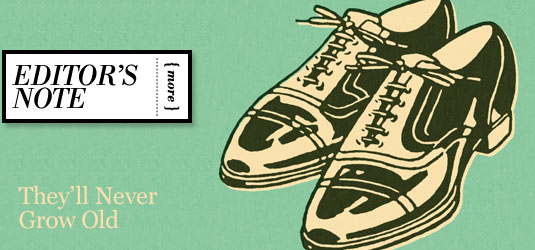Living in a small New York City apartment with my wife and 10-year-old daughter—the latter of whom has a desperate desire to hang onto every little scrap and scribble stretching back to nursery school—makes one come to terms with the finite reality of space. Before executives from Hoarders ask to feature our apartment in an upcoming episode, we have to jettison items that no longer serve a useful purpose.
During our pre-parenting era, there was room for stuff to collect dust in the faraway corners of our closets. But that “stuff” is heading—one cherished, sentimental relic of my childhood at a time—for the landfill. Unwanted things must get the heave-ho, and we look first to the items we no longer use. What better place to start than the scrapheap of electronics? Anyone born before 1980 knows what I’m referring to: cassettes, VCR tapes, LPs, CDs and the aging stereos, boom boxes, VCR players and Walkmans that played them all. Not to mention the bone yard of remotes—God knows which one goes with which device— that clog the entertainment center drawer.
For example, that Asia LP I thought sounded so fresh back in my stonewashed jeans, bomber jacket and mullet days would sound a tiny bit dated now. Besides, the stereo I would need to play it on is long gone. And I haven’t pressed “play” on the rows of cassettes since a boom box was considered an essential electronic accompaniment. Not one has made it out of the customized box I crafted in ninth grade wood shop in years. I’ll just have to find something more useful to put in it, because that fine piece of carpentry isn’t going anywhere. This got me thinking about shoes (of course). Plenty of shoes in my closet can be shown the door because they are scuffed, no longer deliver on performance or simply look dated. Still, unlike a lot of products, shoes are by no means unnecessary. They remain as relevant as they were the day cavemen first discovered the benefits of wrapping animal hides around their feet.
I’m always heartened by this simple fact. Shoes won’t go the way of VCRs and Walkmans. We toyed with the idea these past few seasons during the barefoot/minimalist craze. We even saw products that looked like feet wrapped around feet. But “going barefoot” never meant actually going barefoot. And those few nutty runners who like to go barefoot in the park—literally—are a tiny minority that may soon become extinct for health reasons.
Billions of people covet shoes—in countless different styles—for protection, not to mention a way to express their personal style. I mean, if we all decided to go barefoot then we’d all look pretty much the same from the ankles down—and such uniformity goes against human nature. That’s another ace up the footwear industry’s sleeve.
So, as we here at Footwear Plus embark on another year (number 23) of covering our beloved industry, I take solace in the unending relevancy of footwear as well as our industry’s incessant drive to improve upon its basic design, both technically and artistically. Shoes never ever get old. Sure, footwear trends will come and go. So will brands, stores and the way consumers shop for shoes. But shop they will. Thus, the business of making and selling footwear remains as vital as ever. We look forward to continuing our conversation with you about this ever evolving and highly entertaining process. It’s a fascinating story with no end in sight.
Now if I could only find my way through our cluttered hallway to the door, I could get to my office to review the latest shoes that have come in for our next fashion shoot.
Greg Dutter
Editorial Director




